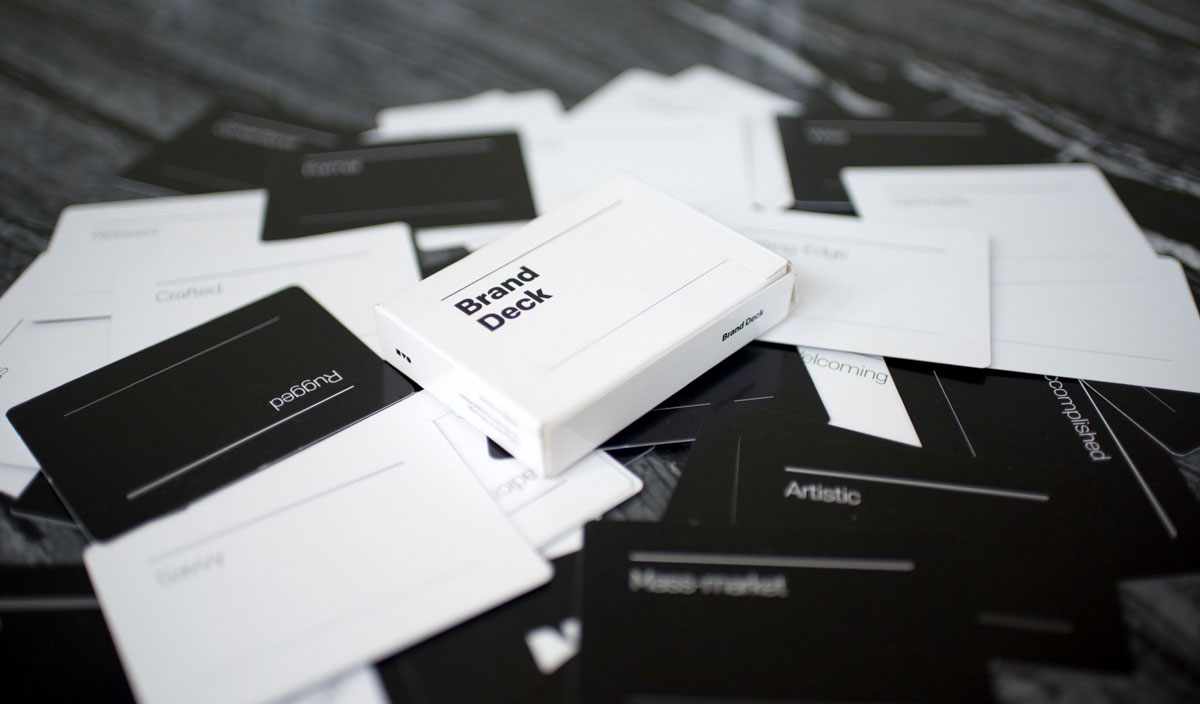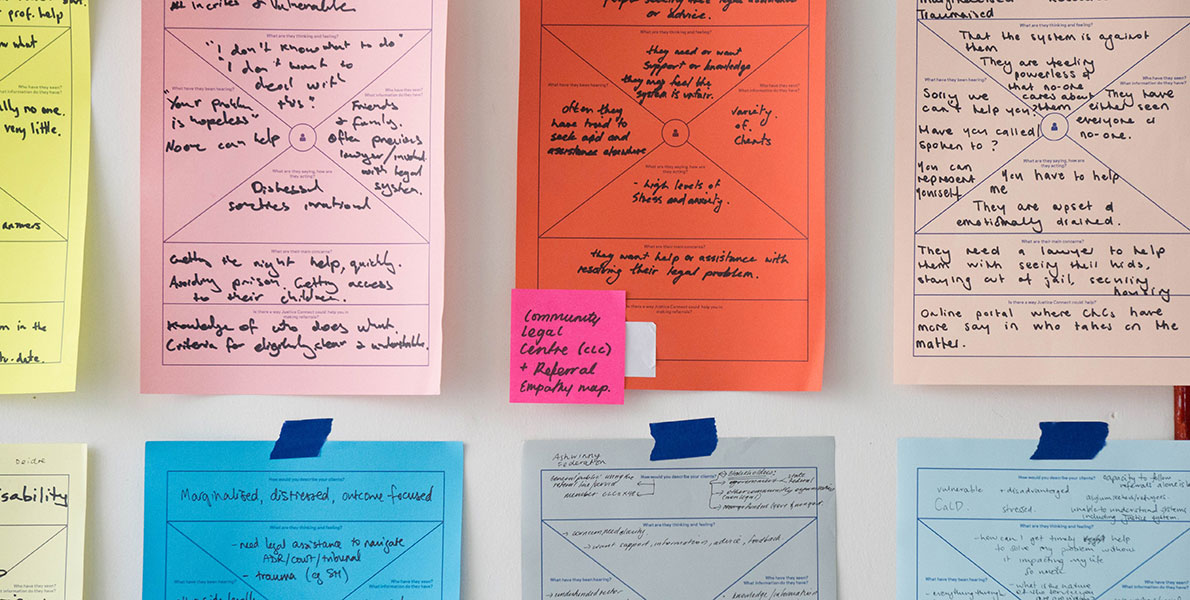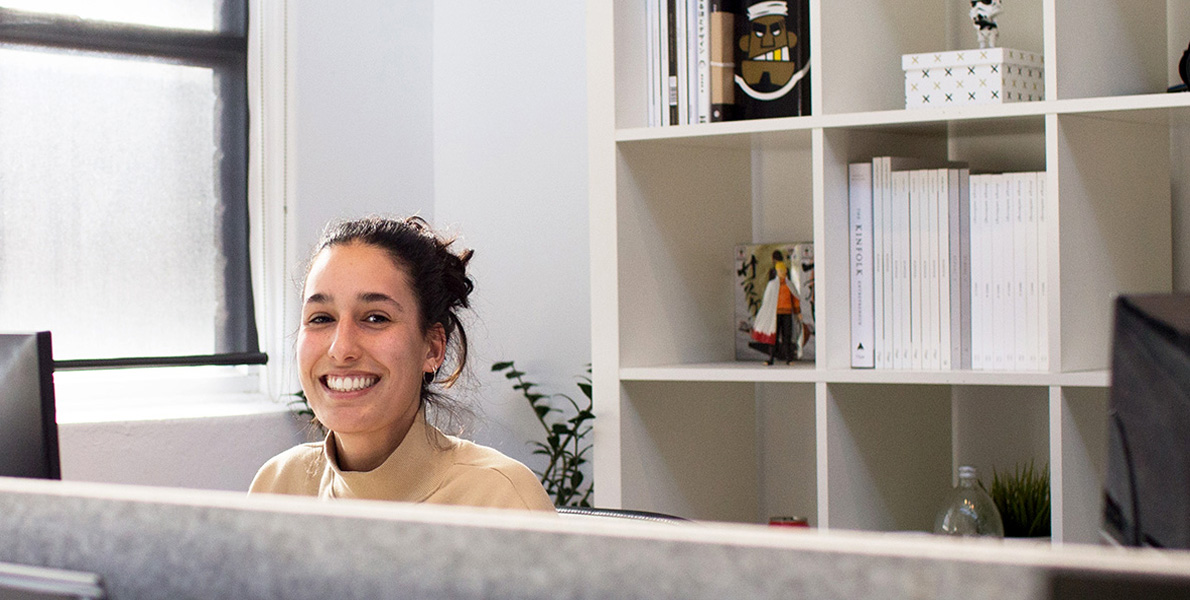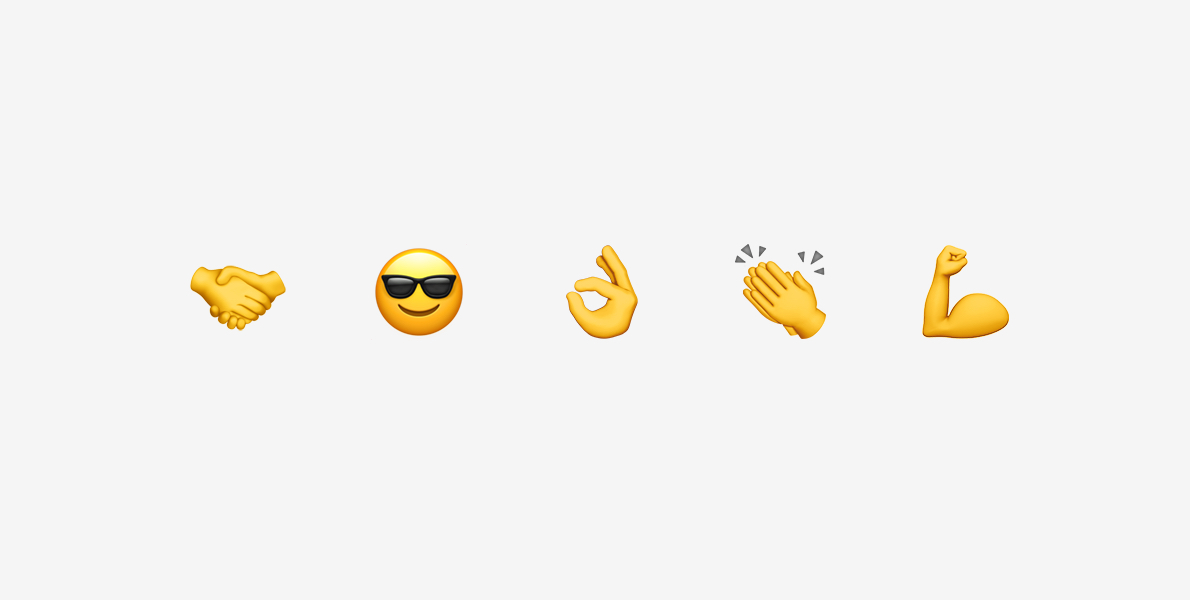Before I learned the value of strategy during the creative briefing, my creative work was aesthetically pleasing, but not purposeful or directed by a clear goal. While I focused on the placement of every pixel, my design did not effectively solve the problems my clients had. About a year ago, I learned about selling strategy as a service from the likes of Melinda Livsey and The Futur. I began researching and adjusting my processes, which eventually allowed me to shift from billing $0 for strategy to charging thousands of dollars for the service while producing effective, high-quality work that solved real-world problems in half the time.
What is strategy?
At this point, you may be wondering: What exactly is strategy, and why should I care?
According to Blair Enns, author of The Win Without Pitching Manifesto (an excellent resource for creative business owners),
Strategy is the process of diagnosing the problem before prescribing a solution.
Strategy is the roadmap that allows you to reach your desired destination, craft the solutions to make the biggest impact possible, reach the proper audience, and solve the problem being faced. In other words, strategy is figuring out the “why” behind the ask. It allows you to determine what the problem is and find the solution to that problem while also having a strong grasp of what success looks like for a certain project before beginning any creative work.

The Brand Deck, an excellent resource for the brand strategy process.
The problem
Before I began incorporating strategy into my briefing process, I would send my clients a lengthy 36-page questionnaire to gather information and get a sense of their preferred creative direction. Questions ranged from color and type preferences to the overall mission and vision of their company. While these questions were helpful and did assist in determining a creative direction, it positioned me as a vendor in my client’s mind, instead of a strategic partner whom they respected. Clients would feel compelled to assume the role of an art director and provide solutions they thought were best, anticipating that I would implement their ideas with little input of my own, which would often lead to less-than-ideal outcomes that did not properly meet their needs.
Because I did not start each project by addressing the problem they were attempting to solve or the audience they were trying to reach, my work would fall to the level of the client’s whims and personal preferences. The final result, while visually appealing to the client, did not take into consideration any factors that would actually help the business succeed. We may have developed an identity that incorporated the client’s favorite color palette, but it was clear it would not appeal to their target audience, first, because we never defined who we were actually trying to reach, and second, because we did not have a clear definition of the end goal.
The solution
As odd as it may sound, clients don’t always know what they really need. While they understand that they have a unique problem they are facing, they don’t necessarily know how to solve it, which is exactly why they hired you. What the client wants and what they need are rarely the same thing. Clients are looking for a better version of themselves and their business, and it is up to you to figure out the best way to provide that. As an objective outsider, you are able to provide valuable insights most business owners are not able to uncover for themselves. Most business owners are “inside the water bottle” — you are there to help them read the label.
Onboarding
First things first. In order to become a strategic partner to my client, first impressions count! The client’s first impression of you begins well before you lay out initial sketches or begin brainstorming initial concepts. The steps you take before entering the design phase are vital to a successful client relationship. From the minute your client signs the contract, you have 90 days to prove your worth and reassure your client that they made the right decision in hiring you. A surefire way to do this is to have a bulletproof client onboarding process. Read more about the Client onboarding process, first impressions count.
The creative brief
The client agreed on the proposal, and the contract is signed! As designers, it can be easy to jump headfirst into the design phase without giving much thought to the problem that needs to be solved. Though it may not always feel like it, you are the expert and are more than capable of developing a creative solution that meets their needs. It is your responsibility and duty to determine what the issue truly is before initiating creative work.
For example, if you are a UX/UI designer hired to develop an app, there are several questions that need to be asked (Read What to ask during a first client meeting with HolaBrief) before even deciding if it’s a project worth pursuing. It’s essential to determine who the target user is and why they should care about the product you are developing. Is there a unique problem to solve? Are there similar products already on the market? If so, are there opportunities to develop something better? Who are the competitors in the space and what have they done (or not done) that we could learn from? There should be an objective understanding of the end goal and why the app should even exist in the first place before designing a single component. Without having an answer to these questions, it would be impossible to know if the project was successful after launch.
If creative work begins without a clear definition of success, the project is bound to fail.
A few deliverables I currently include in my strategic creative brief:
Brand Discovery Workshop
I start with an in-person or video call brand discovery workshop based on HolaBrief's questions template to work through questions such as:
- What would you like to get clarity on?
- What are you hoping to get out of this workshop?
- What is your origin story?
- What are the obstacles and opportunities your are facing?
- What’s the problem we are here to fix? Why does that matter, now? What are we doing about it? What do we want others to do?
- Who are we here for?
- What do we do and how do we do it?
- What makes us different?
- What do we value the most?
- What’s our personality?
- What’s our ambition?
- Why are we here?
Findings & Recommendations
I then present findings and recommendations from the brand workshop and our own independent research, including a brand and web audit, competitive brand analysis, and recommended timeline, deliverables, and investment for the project moving forward. Other items to include can range from an official positioning statement, user personas for the target market, and a form of initial inspiration to get the client excited about moving forward with the next phase of work, such as a mood board or style scape.
I generally gather these findings in my creative brief template and deliver them as a PDF along with the presentation we shared in our final meeting.
Why should I charge for strategy?
Strategy allows you, as the designer, to create work with a definite view of the end goal. Working closely with the client at the beginning of the project to determine goals and get on the same page will allow the work to be done in less time and at a higher rate. It will cut down or even eliminate client revisions, — in fact, I recently had a client approve a logo and visual identity on the first round with zero revisions. Have a clear end in mind will also result in more informed and effective design.
Clients will pay for your insight and critical thinking if it allows them to get where they want to go.

Using strategy, you can determine if a client is a good fit without becoming too invested in a project or taking the risk of doing the upfront work for free. If you determine that the client or specific project is not a good fit, you can easily walk away. Since you have done the important thinking upfront in a briefing phase and have been paid for it, the client can now take the strategy you developed and hire another designer without any hard feelings. This process also lowers the level of commitment for the client, since they can enter into a contract with you at a lower rate before signing on to the larger project. They are able to get a sense of what it’s like to work with you and see how you think, which gives you an ideal opportunity to position yourself as an expert, making it more likely that the client will hire you for the next phase.
How can I start charging for strategy?
It takes time, a shift in mindset, and an adjustment to your current process to get to the point of charging thousands of dollars for brand strategy, but it’s an investment worth pursuing. Beat the imposter within and work on your self esteem. Read A lesson in self-esteem, beating the imposter within.
I first started exploring what it would look like to incorporate more strategy and upfront thinking to my process thanks to HolaBrief's help section within their tool, where they explain why each strategic section adds value to your creative brief. As well as by reading a few books on branding (including Designing Brand Identity, Branding in Five and a Half Steps, and The Win Without Pitching Manifesto) and learning from those who are already charging four to five figures for their thinking. An episode of The Logo Geek featuring Melinda Livsey was especially helpful when I first got started, as well as videos on brand strategy from The Futur.
In order to get paid for your thinking, focus on three things:
- Specialization and positioning
- Collaboration and conversation
- Practice and iteration
Specialization and Positioning
According to The Win Without Pitching Manifesto, to move into a space of high-value consulting, you will need to position yourself in a way that reduces or eliminates the competition. As designers, we live in an increasingly dense field of competitors, but most are low-value designers who compete primarily on price. (Pro tip: never compete on price.) On top of that, clients who exist in this field are not worth pursuing, since those looking for a deal are likely to be more high-maintenance and difficult to please.
In order to cut through the noise, you need to specialize.
Specialization is the act of narrowing your niche to clearly differentiate yourself from the competition. You can read more about finding your niche as a designer in this article How to write a positioning statement. You cannot be all things to all people, so it’s crucial to choose your focus: What business are you really in? Clarify what skills, capabilities, and processes you have that allow you to be an expert in your field. Narrow your niche to the point where you are no longer competing on price and where you have little competition. Focus on finding the intersection between two areas in which you are skilled. For example, if you have a background in the restaurant industry and are a designer, you could position yourself to target restaurant owners and provide high-value consulting and industry insights alongside tailored design services. Finding the sweet spot at the confluence of the things you are best at will allow you to reach a more specific audience and cut out a significant amount of competition.
When you specialize, you no longer need to compete on price. In fact, you will be able to charge a premium for your specialized services and set a minimum fee in order to back that claim and weed out bad clients. When you charge more than your competition, it strengthens your position as an expert. Of course, charging thousands of dollars for strategy before starting any creative work can be a deterrent, but the clients who do meet your criteria and are able to afford your services will trust you and view you as a valuable partner.
Specializing also enables you to be highly selective of the clients you take on. Say ‘no’ to clients early in the process (Read How to say No to a potential client) when necessary, and as often as needed. As a specialist, you have the luxury of only working with clients who are the perfect fit for the services you provide.
Collaboration and Conversation
As a specialist, your focus will be on collaboration between your team and your clients, building the foundation for a lasting working relationship. Adding strategy as a service will add time to the front end of your projects, but it will lay the groundwork for a trusting, healthy relationship to come.
When I first attempted to sell strategy as a service, I leaned heavily on carefully crafted sales decks. It was clear to the potential client I had spent hours developing the perfect messaging and layout for my proposal, which made it more difficult for them to say ‘no’, even though they were not interested in the services I was trying to sell. It signaled that I clearly needed the business, which put me in a compromised position and made if more difficult for them to be honest with me.
It is better to invest your time in building a relationship with a potential client in order to determine if they are a good fit before moving forward. You will save yourself hours of work building the perfect sales deck or trying to price out a project before it’s necessary. Use the conversations you have with your clients to help them focus on the goal they are working to reach and explain how you can help them get there. If the client is hyper-focused on the end result, they will be more likely to trust you and be fully on board with your process.
When connecting with clients, make it a priority to meet in person. If that’s not possible, host a video call. Having a face-to-face conversation allows you to build trust more effectively than other forms of communication and gives you the ability to unearth hidden insights more effectively.
Practice and Iteration
Before you can charge four to five figures for your thinking, you will need to have several successful brand strategy projects under your belt. While anyone can do it with the right amount of time and resources, there are many nuances to proper brand strategy execution, and it takes time to master.
Start by finding a basic strategic creative brief template for brand strategy, for example with HolaBrief, and begin to iterate on that foundation. There may be templates you want to adjust that will allow you to develop a system that works best for your current process and the type of clients you work with.
Set up calls with your clients to walk through your creative briefing process. This is a simple way to understand what holes you need to patch and how you can make the process more effective for your client.
Avoid sending your client any type of “homework” — it’s your job to ask them the right questions and solve a problem for them, not give them more work to do.

Once you have a basic strategy process in place, begin offering your services to friends and clients for free. Use this opportunity to explain you are working to implement a new strategy service and would like to gain their insight. Most clients will be happy to get a service for free, especially if they may benefit from it. Ask for constructive feedback throughout the process -- what could be improved, areas that were unclear or did not make sense to them, and any other ideas they may have for you to improve overall. If you know other designers who are working to incorporate brand strategy into their offerings, swap brand strategy systems and run through the process on each others’ businesses. As you complete each project, note what needs to be adjusted and why, and begin to fine-tune each step. Continue to repeat as many times as you feel necessary.
Document the process you went through with each client, including the problems faced, the solution proposed, and the end result. As you begin compiling case studies illustrating the work you’ve done, add them to your website along with information about the strategy services you provide. This will give potential clients confidence in your ability to deliver and clarify exactly what services you offer.
Once you have completed several practice brand strategy projects, you can start charging for your services. Start at a lower price point and gradually increase your rate as your confidence and experience grows. With each project moving forward, make sure your proposal states that the client has to go with you through a form of strategy in a kickoff meeting before initiating any creative work. Read here about What to include in your proposal template.
Closing thoughts
After following the steps above to integrate strategy into my service offerings, I have increased my project fee by thousands of dollars and have nearly eliminated client revisions. My clients are able to begin every project with a clear goal and definition of success, which in turn increases overall buy-in from primary stakeholders. My team and I provide valuable new insights before beginning any creative work, which positions me as an expert, which gives me the ability to confidently recommend which deliverables the client should be pursuing. The work I deliver is now informed and effectively solves challenges my clients are facing, pushing the needle for my clients’ businesses more than ever before.
Position yourself as a strategic partner with the help of HolaBrief's online briefing tool. The strategic templates help guide you through the kickoff meeting so you are ready to begin every creative project with a clear goal and definition of success.





